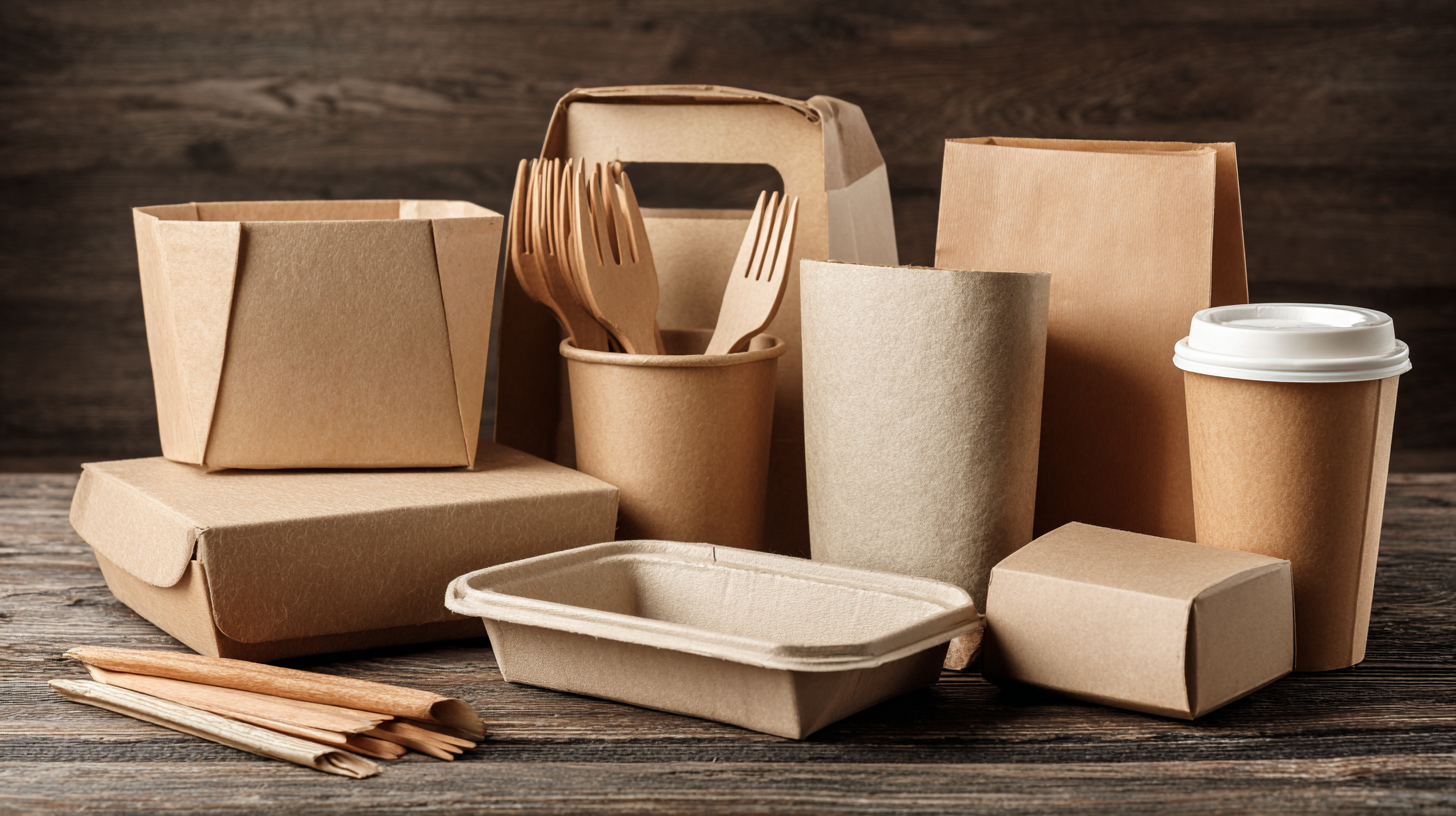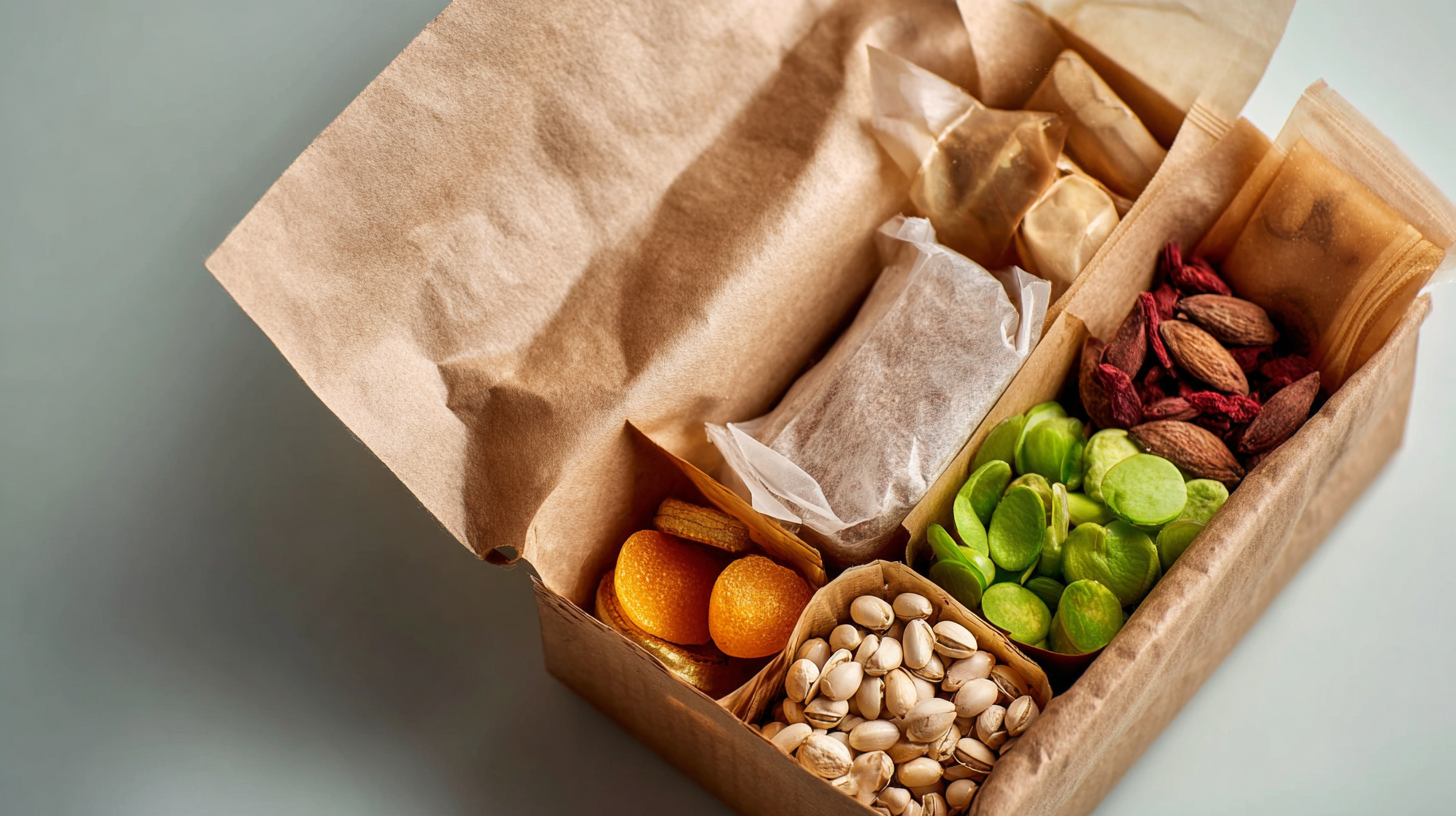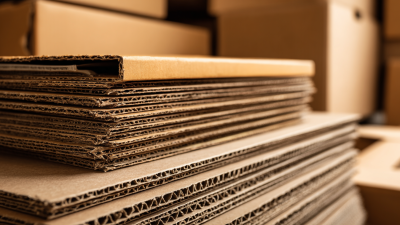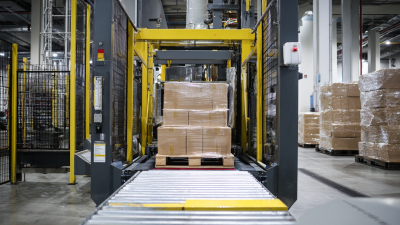7 Innovative Benefits of Biodegradable Packaging You Didn't Know About
As the global focus shifts towards sustainability, biodegradable packaging has emerged as a critical innovation in the fight against plastic pollution. According to a recent report from Smithers Pira, the global market for biodegradable packaging is expected to reach a staggering $493 million by 2025, growing at a compound annual growth rate (CAGR) of 14.4%. This surge underscores a growing consumer preference for eco-friendly alternatives, driven by increased awareness of environmental issues.

Biodegradable packaging not only addresses the urgent need to reduce waste but also offers innovative benefits that many are still unaware of. From enhancing brand loyalty to reducing carbon footprints, the advantages of adopting biodegradable packaging are multi-faceted and essential for businesses aiming to stay competitive in today's eco-conscious market. In this blog, we will explore seven remarkable benefits of biodegradable packaging that go beyond just being environmentally friendly.
The Environmental Impact of Biodegradable Packaging: Key Statistics and Insights
Biodegradable packaging is becoming increasingly crucial in addressing the environmental crisis posed by traditional plastics. According to a report by Grand View Research, the biodegradable packaging market is projected to reach $400 billion by 2025, growing at a compound annual growth rate (CAGR) of over 14%. This surge highlights a significant shift towards sustainable solutions that reduce waste and pollution. Notably, biodegradable materials can decompose within 90 to 180 days under the right conditions, compared to the centuries it takes for conventional plastics to break down, thereby offering a more responsible alternative.
Moreover, a report by the World Economic Forum indicates that if we continue on our current path, the oceans could contain more plastic than fish by 2050. Biodegradable packaging can play a vital role in mitigating this alarming statistic. Innovative companies are now leveraging materials such as PLA (polylactic acid) and PHA (polyhydroxyalkanoates), which are sourced from renewable resources and offer similar functionality to conventional packaging. A recent study from the Ellen MacArthur Foundation reveals that by shifting to biodegradable options, we could reduce the greenhouse gas emissions from packaging by up to 75%. This transformative potential demonstrates the critical impact biodegradable packaging can have on our environment and future sustainability.
Cost-Efficiency: How Biodegradable Packaging Can Save Companies Money
Biodegradable packaging is more than just an eco-friendly alternative; it also presents significant cost-saving opportunities for companies. According to a report by Smithers Pira, businesses can save up to 30% on waste management costs by switching to biodegradable packaging, which decomposes naturally and reduces landfill fees. This switch not only aligns with sustainability goals but also offers a tangible financial benefit that can enhance the company's bottom line.
Moreover, the biodegradable packaging market is projected to reach $24.7 billion by 2024, as noted by the Market Research Future report. This rapid growth is driven by increasing consumer demand for sustainable practices, prompting businesses to invest in biodegradable solutions. By adopting these materials, companies can improve their brand image and customer loyalty, ultimately leading to increased sales. With the eco-conscious consumer market expanding, the initial investment in biodegradable packaging can lead to substantial long-term savings and increased revenue opportunities.

Consumer Preferences: The Growing Demand for Eco-Friendly Packaging
As consumer consciousness around environmental issues continues to rise, the demand for eco-friendly packaging options has become a pivotal trend in the marketplace. Gone are the days when customers prioritized mere convenience over sustainability; today, shoppers are looking for products that align with their values, particularly in terms of reducing plastic waste. Biodegradable packaging has emerged as a front-runner in catering to this shift, presenting an innovative solution that not only serves its purpose but also contributes positively to the ecosystem.
The use of biodegradable materials allows companies to demonstrate their commitment to environmental responsibility while appealing to a more discerning audience. Consumers are increasingly seeking brands that integrate sustainable practices into their production processes, and biodegradable packaging meets this demand by breaking down naturally in various environments, thus minimizing long-term pollution. As a result, businesses adopting these practices not only build stronger relationships with eco-conscious customers but also differentiate themselves in a competitive market. The growing enthusiasm for biodegradable packaging reflects a broader movement towards sustainable consumption, urging businesses to innovate their packaging solutions to secure a loyal customer base.
7 Innovative Benefits of Biodegradable Packaging You Didn't Know About
| Benefit | Description | Consumer Preference % | Impact on Environment |
|---|---|---|---|
| Reduced Landfill Waste | Biodegradable packaging decomposes faster than traditional plastics. | 78% | Helps reduce landfill size and pollution. |
| Lower Carbon Footprint | Manufacturing processes for biodegradable materials often use less energy. | 65% | Reduces greenhouse gas emissions. |
| Enhanced Brand Image | Companies using eco-friendly packaging may attract environmentally-conscious consumers. | 70% | Promotes sustainability and responsible manufacturing. |
| Improved Product Preservation | Certain biodegradable materials can enhance shelf life. | 60% | Reduces spoilage and waste related to food products. |
| Consumer Health Safety | Biodegradable materials are often made from natural sources. | 72% | Reduces exposure to harmful chemicals found in traditional plastics. |
| Regulatory Compliance | Many governments are pushing for reduced plastic use. | 67% | Facilitates adherence to regulations promoting sustainability. |
| Innovation and Development | Investing in biodegradable packaging drives R&D in sustainable materials. | 71% | Encourages new solutions to environmental challenges. |
Compliance and Regulations: Navigating the Future of Sustainable Packaging
As the world increasingly gravitates towards sustainability, compliance and regulations surrounding biodegradable packaging are evolving rapidly. Government bodies and environmental organizations are imposing stricter policies to encourage businesses to adopt greener practices. This shift not only helps in reducing plastic waste but also drives innovation in packaging solutions. Brands are now required to ensure their products meet specific biodegradable standards, leading to the development of new materials that break down more efficiently, thereby reducing their environmental impact.

Navigating these regulatory landscapes can be challenging for companies, yet it presents a unique opportunity for growth. By aligning with sustainable regulations, businesses can enhance their brand image, appeal to eco-conscious consumers, and potentially reduce their operational costs through waste reduction strategies. Moreover, companies that proactively engage in compliance demonstrate leadership in corporate responsibility, positioning themselves as forward-thinking in the eyes of consumers and investors alike. As the demand for eco-friendly products grows, understanding and adapting to these regulations will be essential for any brand looking to thrive in the market.
Innovative Material Science: Advances in Biodegradable Packaging Solutions
The field of material science has witnessed remarkable advancements in biodegradable packaging, transforming how businesses approach sustainability. Innovative materials such as polylactic acid (PLA), derived from cornstarch, and mushroom-based packaging are not only eco-friendly but also capable of breaking down naturally without leaving toxic residues. These materials are designed to replace conventional plastics while maintaining durability and functionality, making them ideal for a variety of applications, from food packaging to consumer goods.
When opting for biodegradable packaging, consider these tips: First, ensure that the packaging is certified compostable to guarantee it meets specific environmental standards. Second, choose packaging that aligns with your product's shelf life; some biodegradable materials can offer excellent protection for shorter durations. Finally, educate consumers on proper disposal methods to maximize the benefits of biodegradable options. By integrating innovative materials into your packaging strategy, you can significantly reduce environmental impact while appealing to a growing market of eco-conscious consumers.
7 Innovative Benefits of Biodegradable Packaging
This chart illustrates the advantages of biodegradable packaging solutions, highlighting their potential impact on environmental sustainability and their role in reducing plastic waste.
Related Posts
-

Navigating International Standards: How Best Cardboard Packaging Meets Global Import Certification Requirements
-

Exploring Innovative Examples of Pallet Shrink Wrap Machines in Modern Warehousing
-

Innovative Examples of How Packaging Machines Transform Production Efficiency
-

7 Best Practices to Optimize Your Usage of Corrugated Cardboard for Packing Solutions
